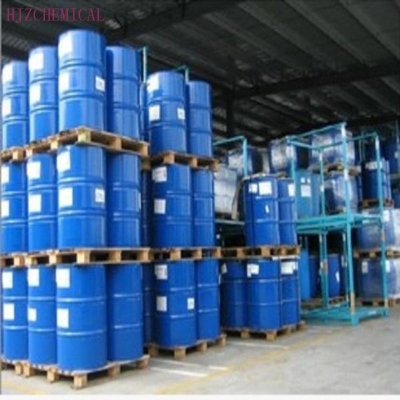-
Categories
-
Pharmaceutical Intermediates
-
Active Pharmaceutical Ingredients
-
Food Additives
- Industrial Coatings
- Agrochemicals
- Dyes and Pigments
- Surfactant
- Flavors and Fragrances
- Chemical Reagents
- Catalyst and Auxiliary
- Natural Products
- Inorganic Chemistry
-
Organic Chemistry
-
Biochemical Engineering
- Analytical Chemistry
-
Cosmetic Ingredient
- Water Treatment Chemical
-
Pharmaceutical Intermediates
Promotion
ECHEMI Mall
Wholesale
Weekly Price
Exhibition
News
-
Trade Service
On July 27, media reporters learned from the Shaanxi Provincial Poverty Alleviation Office that the office and the Shaanxi Provincial Development and Reform Commission jointly issued the "Implementation Opinions"
for photovoltaic poverty alleviation work.
Starting from this year, Shaanxi Province will spend five years to build photovoltaic power stations with a total installed capacity of 1 million kilowatts in 1,932 poor villages in 18 key photovoltaic poverty alleviation counties, ensuring that 195,000 poor households without labor in the archives receive an annual stable income of more than
3,000 yuan.
The "Implementation Opinions" stipulates that the photovoltaic poverty alleviation project is mainly implemented
in 18 nationally determined counties and districts.
The specific implementation targets will be divided into two categories: one is poor villages with no collective economic income or weak collective economy and lack of resources; The second is poor households
with no ability to work, no resources, and no stable source of income.
Its construction methods will be divided into three types: First, village-level photovoltaic power stations
.
Make full use of the vacant land of the village collective, the roof of public buildings and other conditional areas, and plan to build a number of photovoltaic power stations of 100 kW to 200 kW for a single power
station.
The second is household photovoltaic power plants
.
That is, make full use of poor household houses, stabilize the roof of breeding buildings, and idle land in the courtyard to build a single household photovoltaic power station
with an installed capacity of about 5 kilowatts.
The third is centralized photovoltaic power plants
.
For poor households that cannot achieve the goal of increasing the average annual income of households by 3,000 yuan through household and village-level photovoltaic power plants, priority is given to unused land such as barren hills and slopes or combined with facility agriculture and fishery, and the construction of centralized photovoltaic power stations
is planned by districts and counties.
Other cities and counties with better lighting resources can organize photovoltaic poverty alleviation projects
according to local conditions.
The "Implementation Opinions" requires that photovoltaic poverty alleviation is one of the means of industrial poverty alleviation, and all localities should accurately grasp the boundary between photovoltaic poverty alleviation projects and general commercial photovoltaic power generation projects, and prevent the preferential policies and indicators that photovoltaic poverty alleviation projects should enjoy from being transferred to commercial projects
.
Districts and counties should set up a photovoltaic poverty alleviation promotion working group headed by the main responsible comrade to determine the construction fund raising plan
.
The poverty alleviation department should confirm the information of poor households included in this photovoltaic poverty alleviation to prevent overreporting, omission and concealment; The financial department shall be responsible for the raising and supervision of financial funds; The development and reform department should be responsible for the acquisition and distribution of photovoltaic poverty alleviation indicators, and prepare the implementation plan for photovoltaic poverty alleviation; Land and resources, forestry, agriculture and other departments should timely issue opinions on supporting photovoltaic poverty alleviation projects, and implement preferential policies; China Development Bank, Agricultural Development Bank of China and other branches in Shaanxi should support photovoltaic poverty alleviation through measures such as moderately lowering the benchmark interest rate of the central bank's loans for the same period; Power grid enterprises should step up the implementation of rural power grid transformation and upgrading and transmission line project construction, responsible for point package installation, commissioning, grid-connected power generation, etc.
, to ensure the long-term stable operation of photovoltaic poverty alleviation projects and the long-term benefits
of poor villages and poor households.
On July 27, media reporters learned from the Shaanxi Provincial Poverty Alleviation Office that the office and the Shaanxi Provincial Development and Reform Commission jointly issued the "Implementation Opinions"
for photovoltaic poverty alleviation work.
Starting from this year, Shaanxi Province will spend five years to build photovoltaic power stations with a total installed capacity of 1 million kilowatts in 1,932 poor villages in 18 key photovoltaic poverty alleviation counties, ensuring that 195,000 poor households without labor in the archives receive an annual stable income of more than
3,000 yuan.
The "Implementation Opinions" stipulates that the photovoltaic poverty alleviation project is mainly implemented
in 18 nationally determined counties and districts.
The specific implementation targets will be divided into two categories: one is poor villages with no collective economic income or weak collective economy and lack of resources; The second is poor households
with no ability to work, no resources, and no stable source of income.
Its construction methods will be divided into three types: First, village-level photovoltaic power stations
.
Make full use of the vacant land of the village collective, the roof of public buildings and other conditional areas, and plan to build a number of photovoltaic power stations of 100 kW to 200 kW for a single power
station.
The second is household photovoltaic power plants
.
That is, make full use of poor household houses, stabilize the roof of breeding buildings, and idle land in the courtyard to build a single household photovoltaic power station
with an installed capacity of about 5 kilowatts.
The third is centralized photovoltaic power plants
.
For poor households that cannot achieve the goal of increasing the average annual income of households by 3,000 yuan through household and village-level photovoltaic power plants, priority is given to unused land such as barren hills and slopes or combined with facility agriculture and fishery, and the construction of centralized photovoltaic power stations
is planned by districts and counties.
Other cities and counties with better lighting resources can organize photovoltaic poverty alleviation projects
according to local conditions.
The "Implementation Opinions" requires that photovoltaic poverty alleviation is one of the means of industrial poverty alleviation, and all localities should accurately grasp the boundary between photovoltaic poverty alleviation projects and general commercial photovoltaic power generation projects, and prevent the preferential policies and indicators that photovoltaic poverty alleviation projects should enjoy from being transferred to commercial projects
.
Districts and counties should set up a photovoltaic poverty alleviation promotion working group headed by the main responsible comrade to determine the construction fund raising plan
.
The poverty alleviation department should confirm the information of poor households included in this photovoltaic poverty alleviation to prevent overreporting, omission and concealment; The financial department shall be responsible for the raising and supervision of financial funds; The development and reform department should be responsible for the acquisition and distribution of photovoltaic poverty alleviation indicators, and prepare the implementation plan for photovoltaic poverty alleviation; Land and resources, forestry, agriculture and other departments should timely issue opinions on supporting photovoltaic poverty alleviation projects, and implement preferential policies; China Development Bank, Agricultural Development Bank of China and other branches in Shaanxi should support photovoltaic poverty alleviation through measures such as moderately lowering the benchmark interest rate of the central bank's loans for the same period; Power grid enterprises should step up the implementation of rural power grid transformation and upgrading and transmission line project construction, responsible for point package installation, commissioning, grid-connected power generation, etc.
, to ensure the long-term stable operation of photovoltaic poverty alleviation projects and the long-term benefits
of poor villages and poor households.







